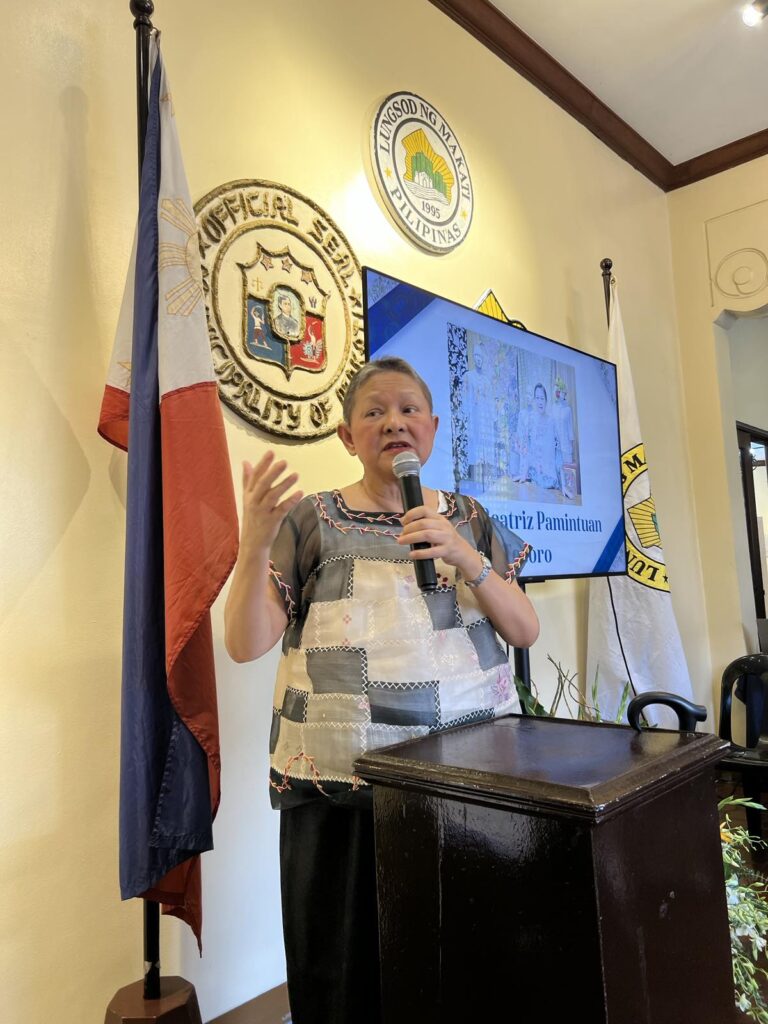In the vibrant tapestry of Filipino arts and heritage, few threads are as intricate and captivating as fashion. Much like traditions and customs, fashion as a form of artistic and cultural expression has played a pivotal role in shaping the Filipino identity and has evolved alongside the nation’s rich history. It is not just about clothes, it is the tales they share, the craftsmanship they embody, the heritage they preserve, and the patrimony they carry on through generations.

The Museo ng Makati, housed in the old Presidencia, which served as the town hall until 1961 and has since been declared as an Important Cultural Property of our islands, proudly presented the Grand Dame of Filipino Fashion herself, Patis Tesoro.

Entitled Kasuotang Filipino: Mga Likha ni Patis Tesoro, this exhibition was a testament to the enduring legacy of our people’s artistic expression. Although celebrated for its romantic allure, these also carry expressions of love for our country.

The exhibit highlighted the enduring 50-year lifelong friendship between Patis and Mita Rufino, who loaned a part of her personal Tesoro-designed Filipiniana. Rufino’s impeccable taste in fashion mirrors her support for the finest designers and creators in the field, with Tesoro as a favorite due to their numerous collaborations.

Maria Beatriz Pamintuan Tesoro, lovingly known as Patis, is the force behind this remarkable assemblage. Her journey began in Iloilo, where she drew inspiration from her mother’s dressmaking skills and honed her own dexterity in embroidery during her time at the Assumption Iloilo.

Her pursuit of artistic excellence brought her to Marygrove College in Michigan, United States, where she studied Art Education. The visionary’s passion in everything Filipino deepened when she married the late Tito Tesoro, whose family owns the iconic Filipino handicrafts store Tesoros.

Together with former Philippine First Lady Amelita “Ming” Ramos, Patis worked tirelessly to protect, preserve and promote the use of pineapple or piña fabric, collaborating closely with local farmers to bolster their production.

Even today, she continues to champion Filipino textiles and embroidery traditions, while infusing bohemian styles and practical, everyday clothing into her creations.

While Tesoro’s genius was on the spotlight, it was equally dedicated to the exquisite beauty and exceptional craftsmanship of Filipino weavers and artisans, burdareras and costureras. The creations on display were nothing short of breathtaking.

The venue showcased 23 long gowns that spanned fashion influences from various regions of the archipelago, which offered glimpses into her sensibilities throughout her illustrious career. These reflected her vision of the elegant Filipino attires.

Hand in hand, fashion designer Albert Figueras had contributed his private treasure trove of fabrics from Luzon, Visayas and Mindanao, offering visitors a valuable opportunity to acquaint themselves on native textiles and weaving traditions — a critical endeavor in an era dominated by fast fashion and synthetic fabrics.
Figueras played a crucial role in curating the whole affair.

In attendance were civic servants such as Makati City Vice Mayor Monique Lagdameo and notable diplomats, business leaders, fashion afficionados, textile artists and modern trendsetters.

The event was made possible by the Filipino Heritage Festival Inc. spearheaded by its president, Mita Rufino. SM Makati manager Kathleen Anne Cruz and SM Retail president Cielo Monasterio generously supported the show.

The exhibit also saw a romantic performance of a string of kundimans from the Choral Society of Makati, joined by the city’s 2018 champion and a member of the University of Makati Chorale Kristina Maniling.
